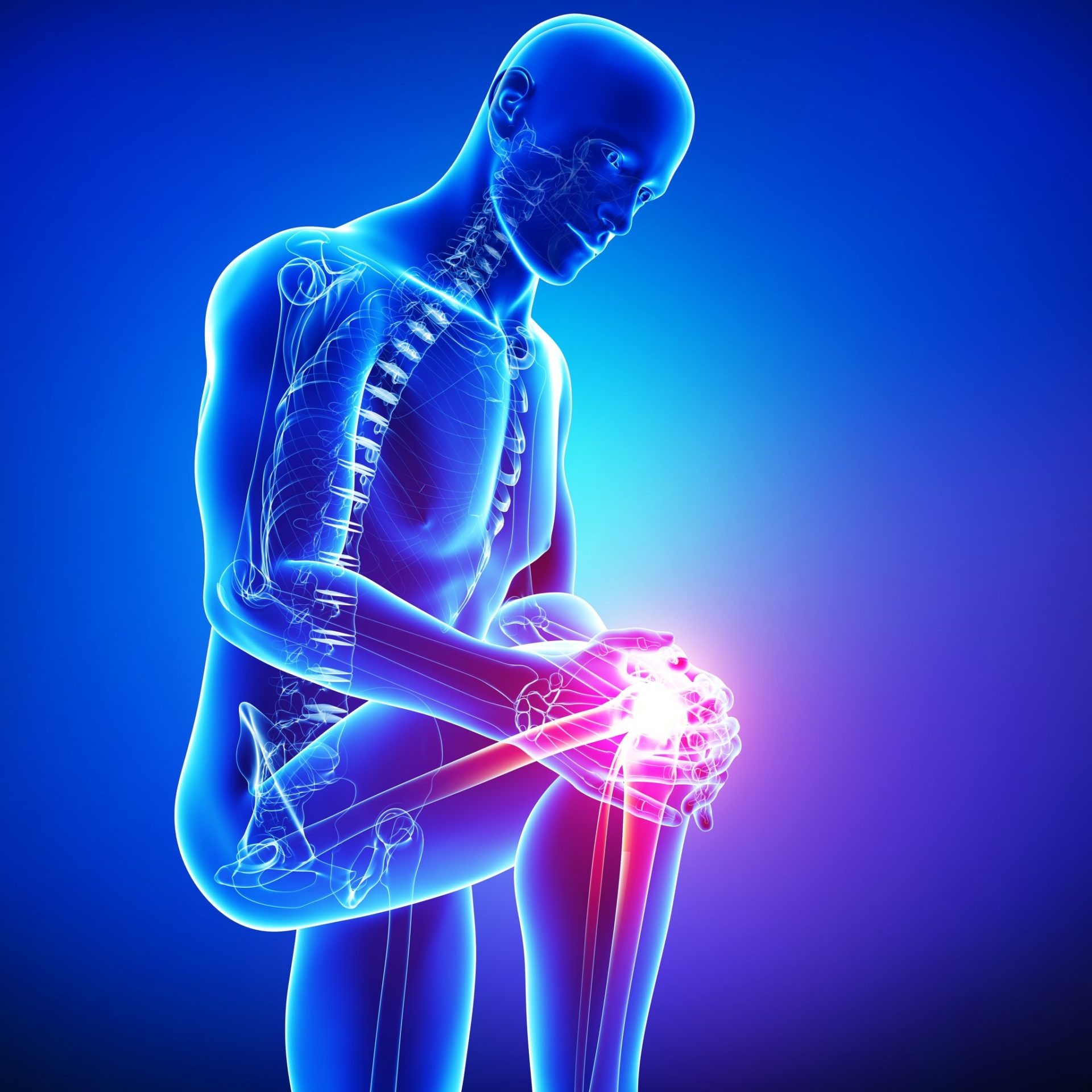The human knee is the largest joint in the body and is made up of bones, cartilage, muscles, ligaments, and tendons. It consists of the lower end of the femur, the upper end of the tibia, the kneecap, and four ligaments that connect the femur and tibia, providing joint stability. The strong muscles surrounding the knee give it strength and mobility while the bone surfaces are covered with articular cartilage, which cushions them. The meniscus acts as a shock absorber and stabilizer while a synovial membrane that releases a special lubricating fluid, reducing friction to nearly zero in a healthy knee, lines it.

The knee joint, unfortunately, is the most easily injured joint and with so many parts working together, injuries can occur from:
- Overuse
- Strains or Sprains
- Sports Injuries
- Work Injuries
- Arthritis
- Excess Weight
- And Direct Impact
Leading to inflammation, pain, swelling and diminished mobility or function. In the past, many athletes and other individuals simply learned to live with their knee pain. Today there is a wide variety of medical treatments and surgical procedures to help treat your knee pain.
The first course of action with knee pain or an injury is to reduce inflammation. Rest, ice, anti-inflammatory medications and modified movements or physical therapy can give the knee a chance to get back to normal. Steroids and orthobiologics are also conservative treatment options for knee pain. Surgery is always the last option; however, arthroscopic surgical treatments have become significantly more advanced in recent years, and can reduce or eliminate knee pain for almost anyone, with a surprisingly short recovery time.
What is Arthroscopy?
Arthroscopy is a minimally invasive outpatient surgical procedure in which a small fiber optic camera and light source are inserted into a joint. It is only a quarter inch in diameter, about the size of a pencil, permitting the surgeon to make very small incisions with little or no scarring. The camera’s high definition video output is connected to a television monitor in real time, so that the operating team can adjust their movements accordingly during the procedure. The surgeon uses sterile fluid and specialized instruments to visualize the knee clearly and remove or repair damaged tissue.
Arthroscopy enables the surgeon to detect knee problems such as ligament and tendon tears, loose pieces of bone and cartilage, joint wear and tear including arthritis, cartilage tears, rheumatologic problems including gout, knee cap instability, fractures and other sources of pain and swelling. The knee is the most common joint operated on using the arthroscope; although the shoulder, elbow, ankle, hip and wrist can also be viewed and fixed by using this method.
With recent advances, surgeons are now able to do cartilage replacement and transplantation, ligament reconstruction, and fracture repair with better results than larger open procedures, as they are much less traumatic to the muscles, ligaments, and tissues than traditional surgeries that open the knee joint.
Arthroscopy’s benefits include:
- Smaller incisions
- Less scarring
- Faster healing
- Decreased infections
- Maintain a normal, active lifestyle
- And a shorter, more reliable recovery time
In fact, most arthroscopic surgical procedures are performed on an outpatient basis, meaning that the patient can go home the same day as the surgery and even walk out.
Signs and symptoms that arthroscopy may be right for you include swelling, pain, locking, instability and loss of confidence in your knee. When other treatments such as medication, physical therapy and bracing have not provided the improvement you or your doctor expected, you may benefit from arthroscopy. Call our office today for an evaluation – 732-720-2555.







